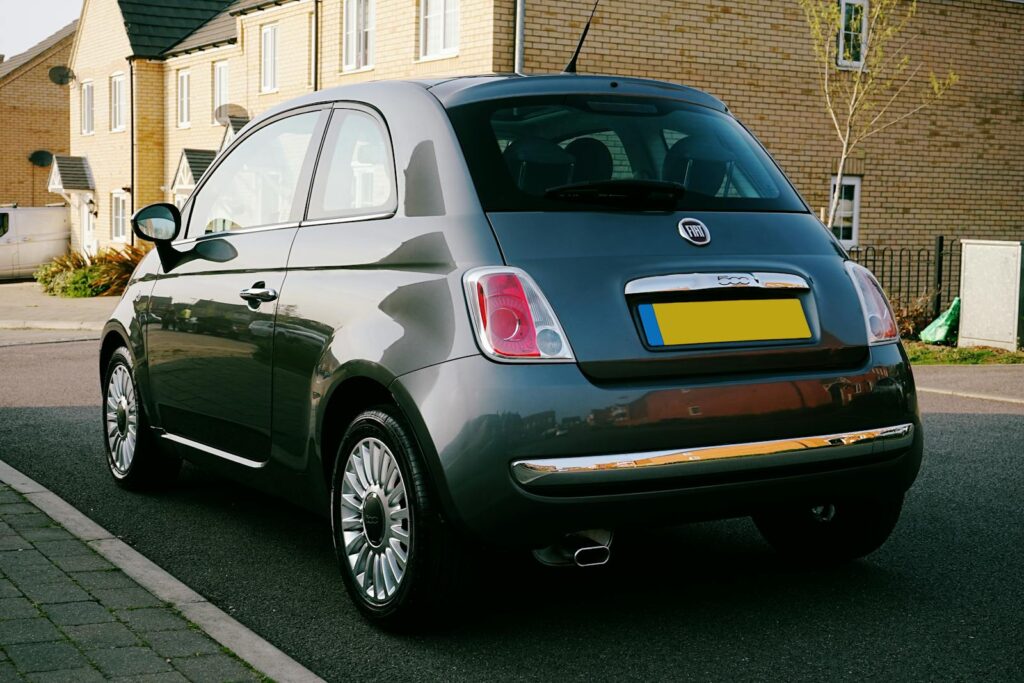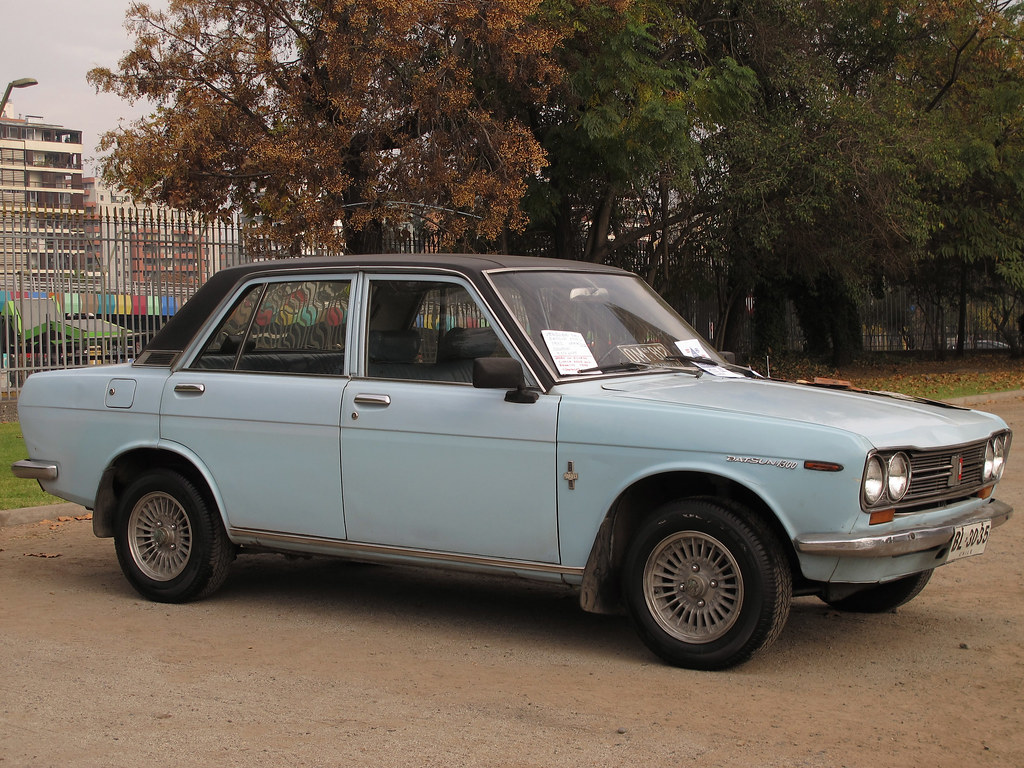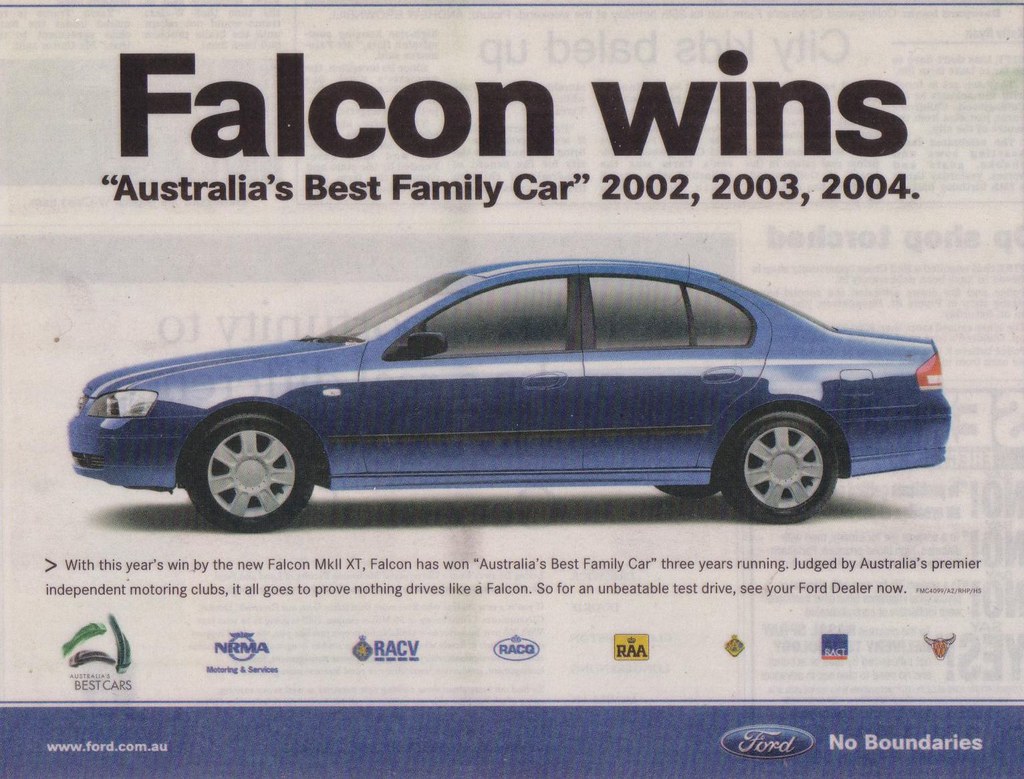
Jerry Seinfeld, a name synonymous with comedic genius and enduring television, holds another profound distinction: that of an automotive connoisseur whose collection transcends mere ownership, delving deep into the realms of passion, preservation, and unparalleled taste. With a net worth estimated near a billion US dollars, it comes as no surprise that the architect of one of the world’s most beloved sitcoms also curates a garage filled with multi-million dollar marvels, many of which have shared the spotlight with him and a star-studded cast on his hit series, “Comedians in Cars Getting Coffee.”
Nestled beneath the bustling streets of Manhattan lies a veritable treasure trove, an assembly of automotive masterpieces valued between a staggering $50 million to $100 million. While his legendary affinity for Porsches is well-documented—a passion ignited by his first 1973 Porsche 911T in Aubergine and culminating in an estimated 47 Porsches at one point—today, we pivot our gaze beyond Stuttgart’s finest. This deep dive into Seinfeld’s garage uncovers the other extraordinary machines that exemplify his eclectic taste and meticulous dedication to automotive history.
From rare vintage roadsters to bespoke sports cars that pushed the boundaries of engineering, each vehicle in this curated selection offers a glimpse into a golden era of motoring. These aren’t just cars; they are artifacts, stories in steel and leather, meticulously maintained and often seen cruising alongside some of the biggest names in comedy and culture, from Jay Leno to former President Barack Obama. Join us as we embark on an exclusive journey through the initial gems of Jerry Seinfeld’s coolest cars, each a testament to design, performance, and an unwavering love for the open road.
1. **1957 Fiat 500 Chopped Top**Kicking off our exploration into Jerry Seinfeld’s truly diverse collection is a car that might, at first glance, seem an anomaly amidst his roster of high-performance machines: the 1957 Fiat 500 Chopped Top. This isn’t just any vintage Fiat; it’s a masterclass in custom charm, a petite Italian marvel that has undergone significant body changes, transforming it into something uniquely Seinfeldian. The associated cost for both the car and its distinctive modifications reportedly hovers around $40,000, a modest sum for a vehicle that exudes such character and individuality.
What makes this particular Fiat 500 a standout in a garage filled with automotive legends is its fundamental simplicity and unpretentious nature. It boasts the smallest engine among all of Jerry’s owned cars, an inline-2 with a mere 0.5 liters, producing a humble 13 horsepower. In a collection where power figures often reach into the hundreds, this Fiat serves as a delightful contrast, embodying the pure, unadulterated joy of basic motoring. Its presence underscores Seinfeld’s appreciation for the full spectrum of automotive history, not just the fastest or most opulent.
The most striking visual modification is, undoubtedly, its “chopped-off top.” This isn’t a conventional convertible; the design features a more cutaway styling around the front doors, with the original hard roof thoughtfully replaced by a soft fabric top. This bespoke alteration gives the car a distinctive, airy feel, perfectly suited for leisurely drives on a sunny day. It’s a bold artistic statement that elevates the car from a humble economy vehicle to a bespoke piece of automotive art.
Jerry Seinfeld acquired this charming red Fiat in 2008, and he has been spotted on multiple occasions enjoying its unique character behind the wheel. The journey of ownership, as with many classics, hasn’t been without its minor adventures; the car reportedly met with a small accident sometime after its acquisition, thankfully without causing any major damage. This Fiat 500 Chopped Top remains a cherished part of his collection, symbolizing that true automotive passion extends beyond raw power and prestige, embracing the whimsical, the historic, and the simply delightful.
Car Model Information: 2012 FIAT 500 Lounge
Name: Fiat 500
Caption: 1970 Fiat 500 L
Aka: Puch 500
Manufacturer: Fiat Automobiles
Production: 1957–1975,3,893,294 units
Assembly: Turin,Desio
Designer: Dante Giacosa
Class: City car
BodyStyle: ubl
Layout: Rear-engine, rear-wheel drive layout
Doors: Suicide door,Car door#Conventional
Related: Autobianchi Bianchina,NSU/Fiat Weinsberg 500,Vignale Gamine,Autobianchi Giardiniera
Engine: Cubic centimetre,499 cc I2,594 cc I2
Transmission: Manual transmission
Wheelbase: {{convert,1840,mm,in,1,abbr=on
Abbr: on
Length: 2970 mm
Width: 1320 mm
Height: 1320 mm
Weight: 499 kg
Predecessor: Fiat 500 “Topolino”
Successor: Fiat 126,Fiat 500 (2007)
Sp: uk
Categories: 1960s cars, 1970s cars, All articles with unsourced statements, Articles containing Italian-language text, Articles with short description
Summary: The Fiat 500 (Italian: Cinquecento, pronounced [ˌtʃiŋkweˈtʃɛnto]) is an economy / city car that was manufactured and marketed by Fiat Automobiles from 1957 until 1975. It was sold as a two-door semi-convertible or saloon car and as a three-door panel van or estate car.
Launched as the Nuova (new) 500 in July 1957, as a successor to the 500 “Topolino”, it was an inexpensive and practical small car. Measuring 2.97 metres (9 feet 9 inches) long, and originally powered by a rear-mounted 479 cc two-cylinder, air-cooled engine, the 500 was 24.5 centimetres (9.6 inches) smaller than Fiat’s 600, launched two years earlier, and is considered one of the first purpose-designed city cars.
In 1959, Dante Giacosa received a Compasso d’Oro industrial design prize for the Fiat 500. This marked the first time a Compasso d’Oro was awarded to an automotive manufacturer.
Get more information about: Fiat 500
Buying a high-performing used car >>>
Brand: Fiat Model: 500
Price: $5,950 Mileage: 91,698 mi.
Read more about: Beyond the Hype: 14 Classic Cars That Haven’t Held Their Value in Today’s Market
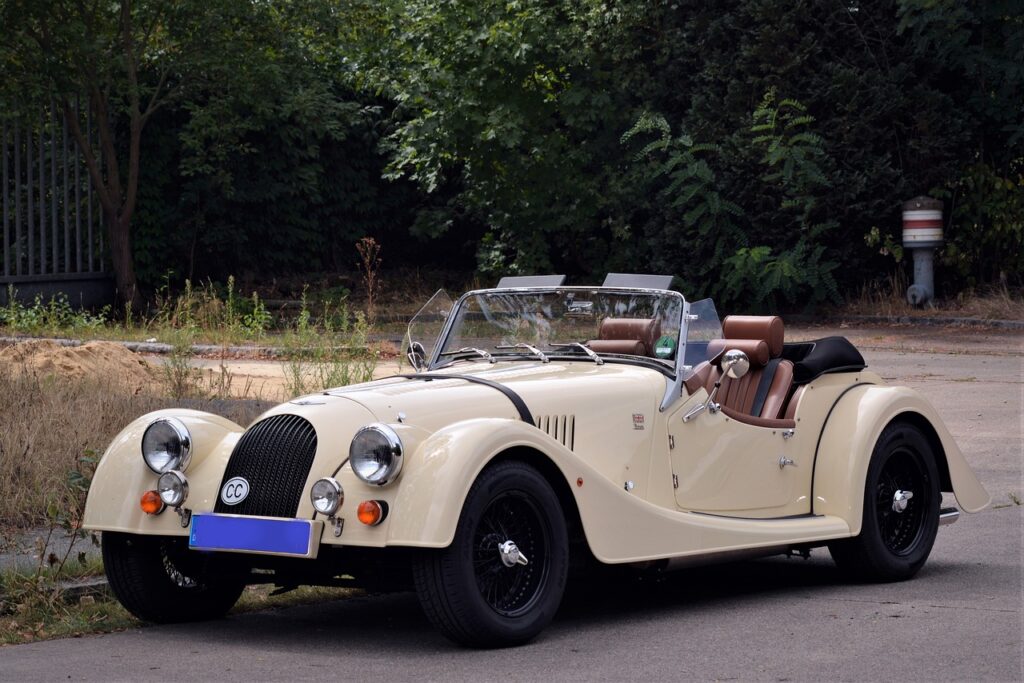
2. **1964 Morgan Plus 4**Venturing further into Seinfeld’s eclectic garage, we encounter the 1964 Morgan Plus 4, a quintessential British roadster that offers a stark, yet beautiful, contrast to the modern machinery and even some of the more overtly luxurious classics. Reportedly acquired for $80,000, this “Plus 4,” or “+4” as it’s often stylized, is finished in a deep, elegant blue exterior hue, and remarkably, Jerry has maintained it in stock condition since its purchase. This commitment to originality speaks volumes about his reverence for automotive heritage and the unblemished artistry of these vintage examples.
The Morgan Motor Company, renowned for its distinctive, hand-built cars, sadly went out of function, which only amplifies the rarity and value of surviving examples like Seinfeld’s. Not many examples of this particular car are left in such good condition in the world, making Jerry’s +4 a particularly prized possession. A defining characteristic of these Morgans is their traditional construction, and Seinfeld’s model proudly features an ash wood frame, a testament to the meticulous craftsmanship that went into these vehicles, blending automotive engineering with natural artistry.
Fans of “Comedians in Cars Getting Coffee” will recall the unmistakable charm of this classic appearing on screen. Jerry thoughtfully chose this very Morgan to pick up none other than Stephen Colbert, a fitting pairing of wit and vintage elegance. The visual of the two comedians cruising in this unique roadster underscores the show’s premise of blending cultural icons with automotive legends, creating memorable moments that resonate with both car and comedy enthusiasts.
Compared to many other roadsters of its era, the 1964 Morgan Plus 4 was notably more powerful and offered a significantly more engaging driving experience. Its 2.1-liter inline-4 engine, producing 105 horsepower, was quite respectable for its time, allowing for a spirited drive that went beyond mere cruising. In Jerry Seinfeld’s magnificent collection, the Morgan Plus 4 stands as a vibrant tribute to British automotive artistry, a perfectly preserved slice of motoring history that continues to capture hearts with its timeless appeal and inherent British charm.
Car Model Information: 2023 Mazda Mazda3 FWD w/Select Package
Caption: 1963 Morgan Plus 4
Name: Morgan Plus 4
Manufacturer: Morgan Motor Company
Production: 1950–1969,4,584 produced,1985–2000,2005–2020
Class: Sports car
BodyStyle: convertible (car)
Layout: Front mid-engine, rear-wheel drive layout
Engine: ubl
Length: 145 in
Abbr: on (Super Sports)
Width: 56 in
Assembly: Malvern, Worcestershire,England,United Kingdom
Height: 52 in
Wheelbase: 96 in
Weight: 1848 lb
Related: Morgan 4/4,Morgan Plus 8
Successor: Morgan Plus Four
Categories: 1960s cars, 1980s cars, 1990s cars, 2000s cars, 2010s cars
Summary: The Morgan Plus 4 is a sports car produced by the Morgan Motor Company. It is a more powerful and, in the case of the earlier cars, a slightly longer version of the company’s previous 4/4 model. Plus 4 production ran from 1950 to 1969. It was revived in 1985 and filled the gap between the 4/4 and the Plus 8 until 2000. It was again produced from 2005 until it was replaced in 2020 by the “all new” Plus Four built on a bonded aluminium platform.
Get more information about: Morgan +4
Buying a high-performing used car >>>
Brand: Morgan Model: Plus 4
Price: $17,921 Mileage: 57,854 mi.
Read more about: Decades of Dust, Gears, and Dreams: Unearthing Hidden Classic and Sports Cars from Abandoned Estates

3. **1967 Austin-Healey 3000 MkIII**Continuing our journey through Jerry Seinfeld’s impressive stable of classic imports, we arrive at another British icon, the 1967 Austin-Healey 3000 MkIII. While the precise purchase price Seinfeld paid for this particular model remains undisclosed, previous auctions for pristine examples of this roadster have seen bids reach an impressive $84,000. True to his meticulous nature and profound respect for authenticity, Jerry has ensured that this car’s exterior paint and interior finish remain as factory-fresh as the day it rolled off the production line, refraining from any modifications.
The Austin-Healey 3000 MkIII represents the pinnacle of the “Big Healey” series, renowned for its blend of sporting performance and touring comfort. Unlike some of the raw performance machines in his collection, this roadster focused more on delivering a smooth, enjoyable cruising experience, making it perfect for leisurely drives. Its elegant lines and classic roadster silhouette are instantly recognizable, embodying the quintessential British open-top motoring experience of the 1960s.
This significant British roadster held the honor of being featured in the very first episode of “Comedians in Cars Getting Coffee,” setting the tone for the entire series. In that memorable inaugural outing, Seinfeld was seen chauffeuring the quick-witted Ricky Gervais, highlighting the car’s timeless appeal and its ability to connect two comedic giants. The sight of the light blue roadster, with its distinctive wire wheels and interior upholstered in Ambla vinyl, instantly established the show’s aesthetic of classic cars and candid conversations.
The 3000 MkIII was a beloved model, but its production curtain sadly fell around the end of 1967, marking the end of an era for the Austin-Healey brand. This makes Seinfeld’s impeccably maintained example not just a car, but a cherished historical artifact. Its 2.9-liter inline-6 engine, delivering 150 horsepower and 165 lb-ft of torque, ensured it had ample power for its intended purpose of comfortable, stylish touring, a true testament to British engineering and design from a golden age.
Car Model Information: 2023 Mazda Mazda3 FWD w/Select Package
Caption: Austin Healey 3000 sports convertible
Name: Austin-Healey 3000
Assembly: Abingdon, Oxfordshire,England
Manufacturer: Austin-Healey
Production: 1959–1967
Predecessor: Austin-Healey 100-6
Successor: MG MGC
Class: Sports car
BodyStyle: Roadster (automobile)
Layout: FR layout
Engine: 2912 cc
Abbr: on (front)
Length: 157 in
Width: 60 in
Height: 46 in
Weight: 2550 lb
Wheelbase: {{convert,92,in,mm,0,abbr=on
Sp: uk
Categories: 1960s cars, Articles with short description, Austin-Healey vehicles, CS1 Swedish-language sources (sv), Cars discontinued in 1967
Summary: The Austin-Healey 3000 is a British sports car built from 1959 until 1967. It is the best known of the “big Healey” models. The car’s bodywork was made by Jensen Motors and the vehicles were assembled at BMC’s MG Works in Abingdon, alongside BMC’s MG models.
During its production life, the car changed from an open sports car, albeit with a child-transporting 2+2 option, to a sports convertible. In 1963, 91.5 percent of all Austin-Healey 3000 cars were exported; mostly to North America. The 3-litre 3000 was a highly successful car, which won its class in many European rallies in its heyday and is still raced in classic car competitions by enthusiasts today.
British Motor Corporation ended manufacture in 1967, filling its place with a car with a new, though similar, engine in a newer monocoque chassis; the MGB variant named the MGC.
Get more information about: Austin-Healey 3000
Buying a high-performing used car >>>
Brand: Austin-Healey Model: 3000 MkIII
Price: $17,921 Mileage: 57,854 mi.

4. **1971 Ferrari 365 GTB/4 Daytona**Shifting gears to the heart of Italy, Jerry Seinfeld’s collection proudly showcases a magnificent 1971 Ferrari 365 GTB/4 Daytona, a true piece of automotive art draped in a striking yellow finish. While similar models of this iconic Ferrari have commanded impressive prices, fetching as high as $661,000 at auctions, it is believed that Seinfeld acquired his for around $250,000. This particular model earned its famous moniker, the “Daytona,” not officially from Ferrari, but from the media, eager to celebrate the car’s legendary 1-2-3 finish at the grueling 24 Hours of Daytona race, cementing its racing pedigree and iconic status.
The 365 GTB/4 was conceived as a two-seater grand tourer Berlinetta, perfectly blending high performance with long-distance comfort and unparalleled style. Its aggressive yet elegant design, characterized by a long bonnet and a sloping rear, instantly became a benchmark for sports car aesthetics. The vehicle was a potent statement from Maranello, designed to compete with the best GT cars of its era, embodying Enzo Ferrari’s unwavering commitment to engineering excellence and breathtaking design.
As an exclusive marvel, the 365 GTB/4 Daytona was produced in limited numbers, with Ferrari crafting only 1,284 units over its five-year manufacturing run. This scarcity, combined with its stunning looks and powerful V12 engine, has made it one of the most sought-after collector cars globally. Jerry’s yellow Daytona, a vibrant symbol of Italian automotive passion, is not just admired in his private garage; it has also captivated audiences on “Comedians in Cars Getting Coffee.”
During its appearance on the show, the Ferrari was used to pick up comedian Amy Schumer, whose reaction to the car’s raw power and the exhilarating rush of its 4.4-liter V12 engine was priceless. Producing 347 horsepower and 318 lb-ft of torque, the V12’s roar surely provided a thrilling, perhaps even slightly startling, experience for the actress. For Jerry, however, it was pure, unadulterated joy, a moment that perfectly encapsulates his deep affection for the visceral experience these classic machines offer, proving that even comedic legends can find their thrill in Italian horsepower.
Car Model Information: 2023 Mazda Mazda3 FWD w/Select Package
Name: Ferrari 365 GTB/4,and GTS/4 “Daytona”
Caption: 1973 Ferrari 365 GTB/4
Manufacturer: Ferrari
Production: GTB/4: 1968–1973 (1,284 produced),GTS/4: 1971–1973 (122 produced)
Assembly: Maranello
Designer: Leonardo Fioravanti (engineer)
Class: Grand tourer
BodyStyle: berlinetta,Roadster (automobile)
Layout: Front-engine, rear-wheel-drive layout
Engine: Ferrari Colombo engine,V12 engine
Transmission: Manual transmission
Wheelbase: 2400 mm
Abbr: on (GTB/4, dry)
Length: 4425 mm
Width: 1760 mm
Height: 1245 mm
Weight: 1200 kg
Predecessor: Ferrari 275#275 GTB/4,Ferrari 365#365 GTC/GTS
Successor: Ferrari Berlinetta Boxer,Ferrari 550 Maranello
Sp: uk
Categories: 1970s cars, All articles with unsourced statements, Articles with hAudio microformats, Articles with short description, Articles with unsourced statements from April 2021
Summary: The Ferrari Daytona is a two-seat grand tourer produced by Ferrari from 1968 to 1973. It was introduced at the Paris Auto Salon in 1968 to replace the 275 GTB/4, and featured the 275’s Colombo V12 with a larger cylinder bore for 4,390 cc (4.4 L; 267.9 cu in). It was offered in berlinetta and spyder forms. The car came in two variants: the 365 GTB/4 coupe, and the 365 GTS/4 convertible.
The Daytona was succeeded by the mid-engined 365 GT4 Berlinetta Boxer in 1973.
Get more information about: Ferrari Daytona
Buying a high-performing used car >>>
Brand: Ferrari Model: 365 GTB/4 Daytona
Price: $17,921 Mileage: 57,854 mi.
Read more about: Bringing Back Legends: 15 Iconic ’60s Cars That Truly Deserve a Modern Comeback

5. **1986 Porsche 959**For any true Porsche aficionado like Jerry Seinfeld, the 1986 Porsche 959 is more than just a car; it’s a monumental chapter in automotive history, a German technological marvel that redefined what a production car could be. Dressed in a pristine white exterior, Seinfeld’s 959 exudes a timeless elegance that perfectly complements his discerning personality. This rear-engine sports car was truly ahead of its time, featuring an all-wheel-drive configuration as standard, a groundbreaking innovation that set it apart from its contemporaries. With a starting price of $225,000, it was an incredibly exclusive machine, but an indispensable one for a collector of Seinfeld’s stature, especially given his legendary love for the Porsche brand. It’s also notable that this particular 959 was among the select few Porsches Jerry chose not to part with during his significant auction a while ago, signifying its irreplaceable status in his collection.
Originally conceived as a concept car for Group B rallying, Porsche, with its characteristic ambition, decided to push the boundaries further by producing a limited run for the road. In total, 337 units of the 959 were meticulously built, with an additional eight units later assembled from spare parts, making each example a rare gem. The engineering brilliance within the 959 was astounding; its twin-turbocharged 2.8-liter flat-6 engine delivered a formidable 444 horsepower and 369 lb-ft of torque. This power, coupled with its advanced all-wheel-drive system and a 6-speed manual transmission, translated into staggering performance figures.
The performance credentials of the 959 were nothing short of sensational for its era. Porsche proudly claimed a blistering 0-60 mph time of just 3.6 seconds, placing it firmly in supercar territory. Furthermore, it boasted a top speed of 198 mph, an astonishing feat that made it the fastest production model that was road-legal at the time. These figures were not just impressive; they were revolutionary, setting new benchmarks for speed, handling, and technological integration in a road-going vehicle.
The enduring legacy of the Porsche 959 is further cemented by its presence in esteemed automotive institutions. Of the precious few units ever made, one model is proudly on display at the Porsche historic hall in Stuttgart, serving as a testament to its iconic status and its profound influence on subsequent sports car development. In Jerry Seinfeld’s esteemed collection, the 959 is more than just a car; it represents the zenith of Porsche’s engineering ambition, a truly aspirational vehicle that stands as a beacon of innovation and performance from a golden age of German automotive prowess.
Read more about: Brace Yourself: The 10 Cars That Instantly Trigger ‘Bad Driver’ Alarms on the Road

6. **1976 Lamborghini Countach**From the cutting edge of German engineering, we transition back to the unbridled passion and audacious design of Italy with the 1976 Lamborghini Countach, a definitive symbol of radical supercar aesthetics. Jerry Seinfeld’s particular model, a mesmerizing metallic blue LP400 variant, is valued at a significant $1,095,000, underscoring its immense desirability and status as a bona fide automotive legend. This striking machine, with its iconic wedge shape and dramatic scissor doors, immediately commands attention, representing an era when automotive design dared to be truly extraordinary.
The Countach first burst onto the scene as a prototype model at the prestigious Geneva Auto Show in 1971, immediately capturing the imagination of the automotive world with its futuristic silhouette. Its production run, which commenced in 1974 and continued until 1990, saw Lamborghini meticulously assemble 1,983 units of this mid-engine marvel in Italy. Seinfeld’s LP400 variant, maintained in its original stock condition, is a pure expression of this initial, unadulterated vision, before later iterations introduced more flamboyant aerodynamic appendages. Its 3.9-liter V12 engine, producing 375 horsepower and 269 lb-ft of torque, provided a visceral driving experience that was synonymous with the Lamborghini name.
This metallic blue beast, an emblem of 1970s supercar excess and innovation, also roared onto the screen in “Comedians in Cars Getting Coffee.” It was chosen by Jerry to pick up none other than the legendary Canadian-American actor and comedic powerhouse, Jim Carrey. The sight of Carrey emerging from the distinctive, upward-opening doors of the Countach was a moment of pure spectacle, perfectly blending celebrity charisma with the car’s unparalleled visual drama. It’s these curated moments that elevate Seinfeld’s collection from mere ownership to a cultural showcase.
In terms of performance, the Countach LP400 was a formidable machine for its time. It was capable of sprinting from 0-62 mph in a rapid 5.4 seconds and boasted a top speed of 179 mph, making it one of the fastest cars on the planet. Its raw power, combined with its audacious styling, solidified its place in automotive lore. The enduring appeal of the Countach is such that Lamborghini even revisited the nameplate in 2022, introducing a hybridized version of the Sian FKP 37 model, a clear homage to the indelible mark this original icon left on the world of supercars. For Jerry Seinfeld, owning a piece of this audacious Italian legacy is a testament to his discerning eye for truly game-changing automobiles.
Car Model Information: 1989 Lamborghini Countach 25th Anniversary
Name: Lamborghini Countach
Caption: Lamborghini Countach LP5000 QV
Manufacturer: Lamborghini
Production: 1974–1990
Assembly: Sant’Agata Bolognese
Designer: Marcello Gandini
Class: Sports car
BodyStyle: coupe
Layout: Longitudinal engine,mid-engine,rear-wheel-drive
Related: Lamborghini LM002
Engine: Lamborghini V12,V12 engine,LP400, LP400 S: {{cvt,3929,cc,L,1,disp=flip
Transmission: synchromesh,Manual transmission
Wheelbase: 96.46 in
Abbr: on (LP5000QV)
Order: flip
Length: 162.99 in
Width: LP 400: {{cvt,74.28,in,mm,0,abbr=on,order=flip
Height: 42.13 in
Weight: {{convert,1300.5,kg,lb,0,abbr=on
Predecessor: Lamborghini Miura
Successor: Lamborghini Diablo
Doors: Scissor doors
Sp: uk
Categories: 1980s cars, 1990s cars, All articles with unsourced statements, Articles containing Italian-language text, Articles containing Piedmontese-language text
Summary: The Lamborghini Countach ( KOON-tahsh) is a rear mid-engine, rear-wheel-drive sports car produced by the Italian automobile manufacturer Lamborghini from 1974 until 1990. It is one of the many exotic designs developed by Italian design house Bertone, which pioneered and popularized the sharply angled “Italian Wedge” shape.
The wedge style was introduced to the public in 1970 with the Lancia Stratos Zero concept car. The first showing of the Countach prototype was at the 1971 Geneva Motor Show, as the Lamborghini LP500 concept.
The “Countach” nameplate was reused for the Sián-based limited-production hybrid-electric model called the Countach LPI 800-4 in 2021.
Get more information about: Lamborghini Countach
Buying a high-performing used car >>>
Brand: Lamborghini Model: Countach
Price: Not Priced Mileage: 7,493 mi.
Read more about: Queen Bey’s Coveted Collection: An Exclusive Deep Dive into Beyoncé’s 15 Most Glamorous and Powerful Rides
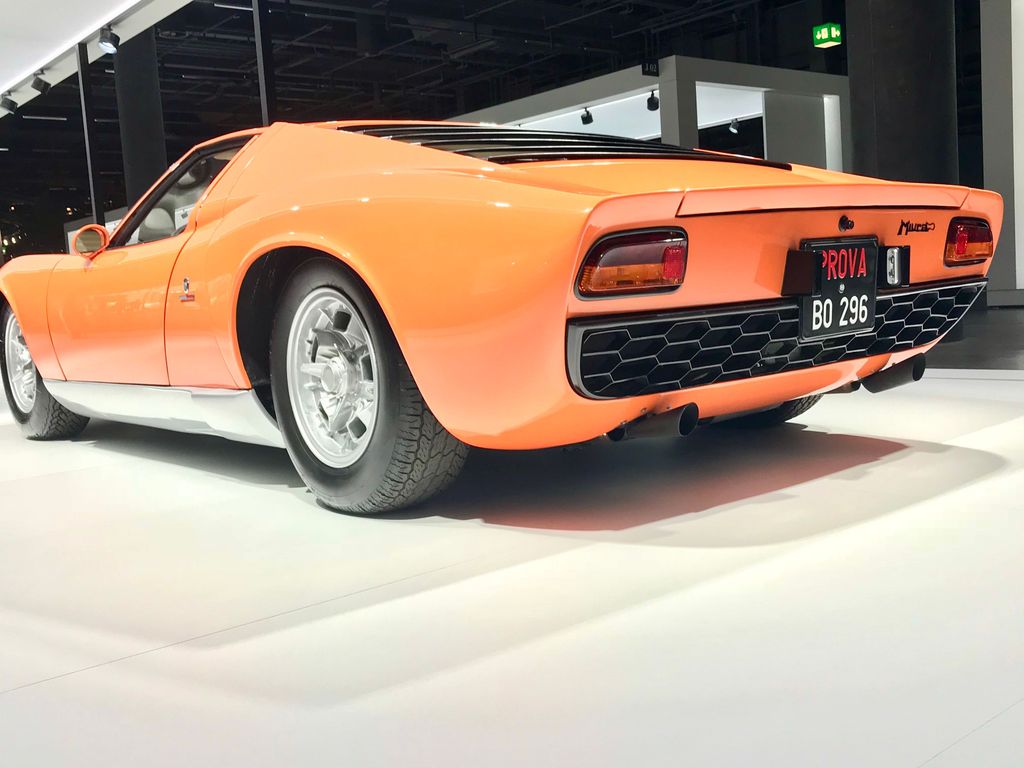
7. **1969 Lamborghini Miura**Steering our gaze back to the Italian masterpieces that grace Jerry Seinfeld’s esteemed collection, we encounter another legendary Lamborghini: the 1969 Miura. Often heralded as the world’s first true supercar, this particular P400 model, resplendent in a vibrant, fiery orange, stands as a testament to Lamborghini’s audacious design and groundbreaking engineering philosophy. Its rarity and historical significance are reflected in its market value, with auction prices for pristine examples known to soar as high as an impressive $2.09 million. Owning a Miura, especially one in such impeccable condition, is akin to possessing a tangible piece of automotive history.
The Miura’s distinctive P400 designation carries a specific meaning, translating from Italian as “Posteriore 4 litri,” a direct reference to its powerful 3.9-liter engine block mounted transversely in the rear. When this revolutionary vehicle first debuted, its launch price of $20,000 made it an exceptionally expensive proposition, even by the standards of the affluent 1960s and 1970s. This exclusivity ensured that only a discerning few could experience the thrill of this automotive marvel, solidifying its status as an aspirational symbol of luxury and performance.
Between 1966 and 1973, Lamborghini meticulously crafted a total of just 764 Miura models, making each surviving example a coveted rarity. This mid-engined icon was not just about breathtaking looks; it delivered formidable performance for its era, achieving a top speed of 171 mph and rocketing from 0 to 60 mph in a swift 7 seconds. The Miura’s pioneering spirit and dramatic styling undeniably set the stage for its equally iconic successor, the Countach, further cementing its enduring legacy as a design and engineering benchmark in the pantheon of supercars.
This vibrant Italian bull also made a memorable appearance on “Comedians in Cars Getting Coffee,” where Jerry Seinfeld used it to pick up the incomparable Chris Rock. The sight of Rock interacting with such a storied machine only added to its legendary status, creating another unforgettable moment that blended comedic brilliance with automotive grandeur. For Seinfeld, the Miura represents not just a car, but a vibrant cultural artifact, a testament to the golden age of automotive design and the thrilling pursuit of unparalleled speed.
Read more about: Rev Up Your Memory Lane! 15 Iconic ’70s Cars That Shaped a Decade of Wild Rides – Did You Own Any of These Legends?

8. **1957 BMW 507 Series II**While Jerry Seinfeld’s garage is frequently described as a veritable Porsche paradise, the real showstopper for many discerning enthusiasts is undoubtedly the 1957 BMW 507 Series II. This exquisite roadster is an exceptionally rare find, with only 252 units ever making their way to American shores, rendering it a truly exclusive gem in any collection. Its profound scarcity and stunning design contribute to its staggering value, with auctions for this beauty fetching up to a remarkable $2.2 million, a figure that underscores its desirability among collectors.
A few years prior, another impeccably preserved 507 model commanded a cool $1.6 million at auction, further highlighting the consistent demand for these magnificent machines. The 507 roadsters were originally conceived and built specifically for the American market, drawing design inspiration and foundational elements from BMW’s earlier 501 and 502 units. This bespoke approach aimed to capture the hearts of American luxury car enthusiasts with a unique blend of European elegance and sporting prowess.
Despite BMW’s ambitious initial hopes for sales in the thousands, the 507 faced significant commercial challenges primarily due to its hefty price tag. At $10,500, it was an incredibly expensive vehicle for its time, leading to underwhelming sales and ultimately resulting in a substantial financial loss for the company. However, its commercial struggles paradoxically cemented its legendary status, turning a financial misstep into an iconic piece of automotive lore.
The allure of the 507 was undeniable, attracting a select group of celebrity buyers who recognized its inherent beauty and prestige. Among its famous owners were the dashing actor John Derek and, perhaps most famously, the King of Rock ‘n’ Roll himself, Elvis Presley. Jerry Seinfeld’s pristine white 507 continued this legacy of star-studded associations when he elegantly chauffeured Academy-Award winner Christoph Waltz in a memorable episode of “Comedians in Cars Getting Coffee,” allowing audiences a rare glimpse of this German masterpiece in action.
Car Model Information: 2023 Mazda Mazda3 FWD w/Select Package
Name: BMW 507
Caption: Frankfurt Motor Show
Manufacturer: BMW
Production: 1956–1959,252 units built
Assembly: Milbertshofen-Am Hart
Designer: Albrecht von Goertz
Class: Grand tourer
BodyStyle: convertible (car)
Related: BMW 503
Layout: Front-engine, rear-wheel drive layout
Engine: cvt,BMW OHV V8 engine
Transmission: ZF Friedrichshafen,manual transmission
Wheelbase: 2480 mm
Abbr: on
Length: 4380 mm
Width: 1650 mm
Height: 1257 mm
Weight: 1330 kg
Sp: uk
Predecessor: BMW 328
Successor: BMW 3200 CS,BMW Z8
Categories: 1960s cars, All articles with unsourced statements, Articles with short description, Articles with unsourced statements from June 2010, BMW vehicles
Summary: The BMW 507 is a luxury grand touring convertible that was produced by German automobile manufacturer BMW from 1956 until 1959. Initially intended to be exported to the United States at a rate of thousands per year, it ended up being too expensive, resulting in a total production figure of 252 cars and heavy financial losses for BMW, all of which nevertheless resulting, as decades went on, in at least three dozen of the surviving units becoming the most sought after at public auctions and, as a result, the most valuable BMW units to have ever been built in the 100+ year history of the brand.
Get more information about: BMW 507
Buying a high-performing used car >>>
Brand: BMW Model: 507 Series II
Price: $17,921 Mileage: 57,854 mi.
Read more about: Beyond the Giveaways: Oprah Winfrey’s Jaw-Dropping Car Collection, From Vintage Gems to Modern Marvels!
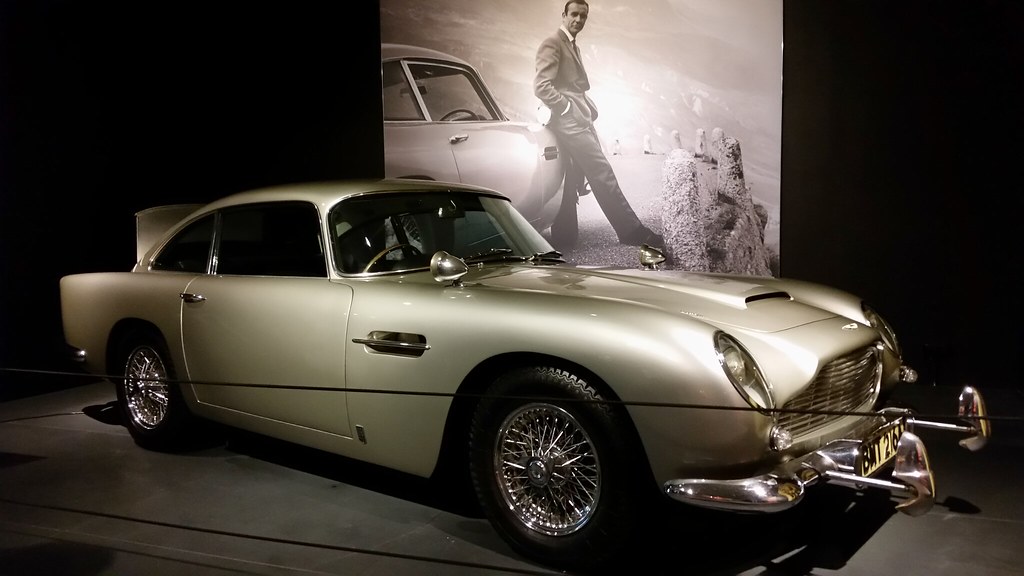
9. **1964 Aston Martin DB5**Gracing the esteemed ninth spot in our curated list, we find the embodiment of British elegance and cinematic history: the 1964 Aston Martin DB5. This British beauty, with its timeless lines and undeniable sophistication, is a profound testament to automotive artistry, boasting auction values that have soared as high as $6.4 million. While prices typically range between $1.2 million and $4.6 million, its consistent high valuation solidifies its status as a highly coveted collector’s item and a true icon of luxury motoring.
The DB5 achieved unparalleled global fame and cemented its legendary status as the iconic Aston Martin Bond car, inextricably linked with the suave sophistication of James Bond. This celebrated model gracefully succeeded the equally revered Aston Martin DB4, carrying forward a legacy of exquisite design and high-performance engineering. It would later be succeeded by the Aston Martin DB6, forming a distinguished lineage of British grand tourers that continue to captivate enthusiasts worldwide.
Jerry Seinfeld’s particular DB5, adorned with classic Borrani wire wheels, also took center stage in “Comedians in Cars Getting Coffee.” In a truly fitting pairing, it was chosen to chauffeur his former “Seinfeld” co-star, the brilliant Julia Louis-Dreyfus. This appearance not only showcased the car’s enduring charm but also underscored its cultural significance, blending the worlds of comedic genius and automotive heritage in a delightful on-screen rendezvous.
Beyond its striking aesthetics and celebrity connections, the 1964 Aston Martin DB5 delivered impressive performance for its era. It was capable of reaching a top speed of 145 mph and could sprint from 0 to 60 mph in a respectable 8.0 seconds. With a curb weight of 3,311 lbs, it offered a balanced and engaging driving experience. Over its relatively short production run between 1963 and 1965, only 1,059 units of this masterpiece were meticulously crafted, further contributing to its exclusivity and enduring allure in the pantheon of classic automobiles.
Car Model Information: 2020 Audi Q5 45 Premium
Name: Aston Martin DB5
Manufacturer: Aston Martin
Production: 1963–1965 (1,059 units),2020 (25 units)
Assembly: Newport Pagnell,England
Designer: Carrozzeria Touring Superleggera
Class: Grand tourer
BodyStyle: coupé
Layout: Front-engine, rear-wheel-drive layout
Engine: DOHC,Straight-6,3995 cc
Order: flip
Abbr: on
Powerout: convert
Transmission: ZF Friedrichshafen
Length: 4570 mm
Width: 1680 mm
Wheelbase: 98.0 in
Predecessor: Aston Martin DB4
Successor: Aston Martin DB6
Doors: 2
Weight: 3311 lb
Sp: uk
Categories: Articles with short description, Aston Martin vehicles, CS1: unfit URL, Cars discontinued in 1965, Cars introduced in 1963
Summary: The Aston Martin DB5 is a British grand tourer (GT) produced by Aston Martin and designed by Italian coachbuilder Carrozzeria Touring Superleggera. Originally produced from 1963 to 1965, the DB5 was an evolution of the final series of DB4. The “DB” designation is from the initials of David Brown who built up the company from 1947 onwards.
The DB5 is best-known for its role in the James Bond films. It was first driven by the fictional spy in the film Goldfinger (1964). In 2013, the car featured on a “British Auto Legends” postage stamp issued by the Royal Mail.
Get more information about: Aston Martin DB5
Buying a high-performing used car >>>
Brand: Aston Martin Model: DB5
Price: $20,422 Mileage: 51,510 mi.
Read more about: Beyond the Screen: Uncovering the Fates of the Most Iconic TV and Movie Cars Ever

10. **1955 Mercedes-Benz 300SL Gullwing**Ascending to the pinnacle of value within Jerry Seinfeld’s remarkable collection is the indisputably iconic 1955 Mercedes-Benz 300SL Gullwing. This automotive legend, instantly recognizable by its distinctive and revolutionary gullwing doors, has commanded a staggering auction price of $6.825 million, making it a true titan in the realm of classic cars. Jerry’s particular example is a vision in pristine white exterior paint, complemented by a luxurious tan and beige interior, further enhanced by elegant white wheel caps.
According to Seinfeld himself, the 300SL is “about as perfect as it comes when it comes to classic cars,” a sentiment widely echoed by automotive experts and enthusiasts alike. Mercedes-Benz painstakingly built a total of just 1,400 units of this coupe model during its production run from 1954 to 1957, making each surviving example an incredibly rare and cherished artifact. Its low production numbers, combined with its groundbreaking design and engineering, secure its place as a monumental achievement in automotive history.
Weighing in at approximately 3,300 lbs, the 300SL was a marvel of lightweight construction for its time. When it was initially introduced in the United States, it carried an initial price tag of $6,820, a considerable sum that reflected its status as a high-performance luxury vehicle. Bearing the chassis code W198, it was a direct successor to the racing W194, inheriting a pedigree steeped in competition and innovation. Beyond Jerry Seinfeld, other famous personalities such as the acclaimed racing driver Rob Walker also owned the illustrious 300SL, further solidifying its reputation among automotive connoisseurs.
This white Gullwing, a symbol of German engineering at its absolute finest, proudly made an appearance on “Comedians in Cars Getting Coffee,” where it had the distinct honor of picking up none other than Lorne Michaels, the legendary creator of “Saturday Night Live.” The sight of Michaels emerging from those iconic upward-opening doors was a moment that perfectly encapsulated the show’s blend of cultural gravitas and automotive splendor. For Seinfeld, this car is not merely a possession; it is a profound embodiment of automotive perfection, a testament to a golden era of design and performance.
Car Model Information: 2023 Mazda Mazda3 FWD w/Select Package
Name: Mercedes-Benz 300 SL
Caption: 300 SL roadster and gullwinged coupé
Manufacturer: Mercedes-Benz
Production: Mercedes-Benz 300 SLR#Uhlenhaut Coupé
Assembly: Stuttgart
Designer: Friedrich Geiger
Class: Sports car,Grand tourer
BodyStyle: coupé,Roadster (automobile)
Platform: Coupé W198 I, Roadster W198 II
Related: Mercedes-Benz 190 SL
Layout: FR layout
Engine: 2996 cc
Abbr: off
Transmission: Manual transmission
Wheelbase: 2400 mm
Length: 4520 mm
Width: 1790 mm
Height: 1300 mm
Weight: 1500 kg
Predecessor: Mercedes-Benz W194
Successor: Mercedes-Benz W113
Doors: Gull-wing door
Categories: 1960s cars, 24 Hours of Le Mans race cars, All Wikipedia articles needing clarification, All Wikipedia articles written in American English, All articles with vague or ambiguous time
Summary: The Mercedes-Benz 300 SL (chassis code W 198) is a two-seat sports car that was produced by Mercedes-Benz from 1954 to 1957 as a gullwinged coupé and from 1957 to 1963 as a roadster. The 300 SL traces its origins to the company’s 1952 racing car, the W194, and was equipped with a mechanical direct fuel-injection system that significantly increased the power output of its three-liter overhead camshaft straight-six engine.
The 300 SL was capable of reaching speeds of up to 260 km/h (162 mph), earning it a reputation as a sports car racing champion and making it the fastest production car of its time. The car’s iconic gullwing doors and innovative lightweight tubular-frame construction contributed to its status as a groundbreaking and highly influential automobile.
The designation “SL” is an abbreviation of the German term super-leicht, meaning “super-light”, a reference to the car’s racing-bred lightweight construction. The 300 SL was introduced to the American market at the suggestion of Max Hoffman, Mercedes-Benz’s United States importer at the time, who recognized the potential demand for a high-performance sports car among American buyers. The Mercedes-Benz 300 SL remains a highly sought-after classic car and is celebrated for its performance, design, and technological advancements.
Get more information about: Mercedes-Benz 300 SL
Buying a high-performing used car >>>
Brand: Mercedes-Benz Model: 300SL Gullwing
Price: $17,921 Mileage: 57,854 mi.
Read more about: Beyond the Giveaways: Oprah Winfrey’s Jaw-Dropping Car Collection, From Vintage Gems to Modern Marvels!

11. **1955 Porsche 550 Spyder**And now, we arrive at the undisputed crown jewel of Jerry Seinfeld’s Porsche collection, a car that holds a special place not just in his garage, but in automotive history: the 1955 Porsche 550 Spyder. This racing legend achieved an astonishing record-breaking sum of $5,335,000 when it was put up for auction, marking it as the most valuable Porsche Seinfeld has ever owned and sold. This monumental sale, handled by Gooding and Co. at the Amelia Island event in 2016, laid the foundation for a world record auction price for the 550 Spyder, demonstrating its unparalleled desirability.
What truly elevates the 550 Spyder beyond mere rarity is its purpose-built racing heritage. This compact, agile machine was meticulously engineered to dominate the 1.5-liter race class, and it did so with such ferocity and success that it earned the evocative nickname “the giant killer.” Its string of victories against more powerful adversaries cemented its reputation as a formidable competitor, showcasing Porsche’s engineering prowess in crafting lightweight, high-performance vehicles.
The specific model that Jerry Seinfeld brought to auction bore the distinctive chassis number 550-0060 and carried the engine number 90-063, further adding to its documented provenance and historical significance. Throughout its storied life, this particular car has passed through the hands of other esteemed collectors, including Lou Hilton and Joel Horvitz, each adding another chapter to its remarkable journey. In total, Porsche meticulously constructed only 90 cars under the 550 tag, ensuring that each Spyder remains an exceptionally rare and revered automotive masterpiece.
The 550 Spyder is more than just a car; it is a profound symbol of Porsche’s foundational racing heritage and a beacon of pure, unadulterated driving exhilaration. Its lightweight construction, nimble handling, and potent flat-four engine delivered an experience that was both raw and incredibly engaging. For Jerry Seinfeld, owning and curating such a significant piece of motoring history is a testament to his deep appreciation for the cars that not only push technological boundaries but also forge enduring legends on the racetrack and beyond.
**An ending paragraph of the article.**
Car Model Information: 2023 Mazda Mazda3 FWD w/Select Package
Manufacturer: Porsche
Production: 1953–1956,90 produced
Designer: Erwin Komenda
Class: Sports car
Assembly: Stuttgart
Layout: RMR layout
Engine: flat four engine
Transmission: Manual transmission
Wheelbase: 2,100 mm (82.7 in)
Length: 3,600 mm (141.7 in)
Width: 1,610 mm (63.4 in)
Height: 980 mm (38.6 in)
Weight: approximately 550 kg (1,212 lbs)
Successor: Porsche 718
BodyStyle: coupé
Categories: 1957 Formula One season cars, 1958 Formula One season cars, 24 Hours of Le Mans race cars, All articles needing additional references, Articles needing additional references from July 2007
Summary: The Porsche 550 is a racing sports car produced by Porsche from 1953 until 1956. In that time only 90 Porsche 550s were produced, and they quickly established dominance in the 1.1- and 1.5- liter classes. The Porsche 550 is a mid-engine car with an air-cooled four-cylinder engine, following the precedent of the 1948 Porsche 356/1 prototype designed by Ferry Porsche. The mid-engine racing design was further developed with Porsche’s 718 model; its advantages led to it becoming the dominant design for top-level racing cars by the mid-1960s.
The Porsche 550 has a solid racing history; it won the Nürburgring Eifel Race in May 1953, the first race it entered. The 550 Spyder usually finished in the top three in its class. Each Spyder was designed and customized to be raced.
A 1958 Porsche 550A Spyder sold at auction in 2018 by Bonhams for $5,170,000 (£4,115,763); it was the highest price for a 550 at auction.
Get more information about: Porsche 550
Buying a high-performing used car >>>
Brand: Porsche Model: 550 Spyder
Price: $17,921 Mileage: 57,854 mi.
Read more about: Gone But Never Forgotten: A Heartfelt Tribute to 11 American Icons Whose Lives Ended Too Soon
As we conclude our extraordinary journey through Jerry Seinfeld’s unparalleled automotive collection, it becomes resoundingly clear that his passion extends far beyond mere acquisition; it is a profound reverence for the artistry, engineering, and inherent narratives encapsulated within each magnificent machine. From the charming whimsy of a chopped-top Fiat to the breathtaking prowess of a Porsche 550 Spyder, his garage is a meticulously curated gallery of automotive legends, each telling a unique story of innovation, design, and performance. Seinfeld’s dedication to preserving these vehicles in their original glory, often sharing them with fellow luminaries on “Comedians in Cars Getting Coffee,” underscores his deep appreciation for the golden age of motoring. He isn’t just a collector; he is a custodian of history, ensuring that these timeless marvels continue to inspire awe and spark joy for generations to come. Indeed, for Jerry Seinfeld, cars are not simply transportation; they are cherished artifacts, embodying a deep-seated love affair with the open road and the enduring magic of the automobile.

